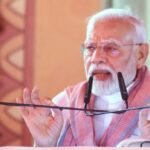Rabat – A current survey by the Moroccan research company Sunergia Scales light About how languages influence daily life in the whole country in 2025.
While Darija is of central importance for all Moroccans for all Moroccans, the study shows shifting patterns that vary depending on the age, region and social class. These developing habits reflect broader changes in education, media consumption and identity.
Darija, the similarities
Darija remains the language of all in a country that is characterized by linguistic diversity.
The study confirms that all Moroccans speak them fluently, with 94% identifying them as their mother tongue. Although Darija has no official status, his presence extends to all aspects of life, from informal conversations to advertising and social media.
Sunergia notes that its flexibility keeps it relevant, especially for younger generations that work effortlessly in online rooms and personal interactions.
Classic Arabic bound with education
The classic Arabic holds the strongest in schools and formal environments.
They say about 29% of Moroccans speak It fluid, with use in the U-34 population is widespread. This age gap reflects the increasing literacy rates of Morocco over the decades.
City dwellers and people in higher socio -economic groups also use the language with greater probability. The classic Arabic fulfills a purpose in cities and among experts, but rarely finds a place in casual, everyday conversations.
Amazigh holds its floor
Amazigh is still deeply rooted in Morocco’s linguistic landscape. Each of four Moroccans speaks and for most it comes from home. While 21% consider it for their first language, the concentration of Amazigh spokesmen in the south of Morocco stands up. The study points out stability rather than growth, which indicates that Amazigh has maintained its presence over generations, especially in rural areas.
French is firmly under control with clear social gap
French continues to play a key role, especially in administration, education and business. Almost every fifth Moroccan speaks fluent, but the use differs greatly from age and class.
Younger Moroccans, especially those under 35, speak French more than those aged 35 to 54.
In the 1980s, the older group survived Morocco’s Arabic Policy, which reduced exposure to French in public education. At the top of the social leaders, 43% of people speak the language in wealthier categories compared to only 6% in groups with lower incomes. French remains a marker for privileges and professional access.
English wins the soil among the youngsters
Although only 9% of the Moroccans report fluently in English, the language has noticed Traction For younger people, city residents and well -trained experts. The number increases to 17%under the age of 34.
Sunergia points out several reasons for this trend: the growing role of English in education, its dominance in global entertainment and its value on the labor market. In the largest cities of Morocco, English is no longer limited to Elite. It now signals ambition and global connection.
Spanish and German hardly register
Spanish and German have little influence in Morocco today. Only 1% of those surveyed say that they speak one of a language fluently.
Although Spanish is present in parts of Northern Morocco and the Sahara due to historical ties, it no longer plays a central role in language life.
Spectrum of multilingualism
In the survey, the broad spectrum of Morocco’s language use is found. Almost half of the population, 45%, only uses one language: Darija. Still Multilingualism remains common. About 34% of Moroccans speak two languages. Below:
-Darija and Amazigh Form the most common couple, especially in rural areas, southern regions and middle -aged adults.
– –Darija and classic Arabic are typical of seniors and city dwellers.
– –Darija and French most often appear in older adults, especially those who live in central Morocco or in the upper socio-economic brackets.
Around 14% of Moroccans speak three languages. One of the most frequently high -quality combinations includes Darija, classic Arabic and French, which can often be found in older adults in cities. In the meantime, younger Moroccans, especially those who are 18 to 24 years old, combine Darija, French and English increasingly, a mixture that speaks for modern education and international media fighting.
The study also points to a small but growing group of polygotions. 11% of four or more languages speak among the Moroccans between the ages of 25 and 34.
This trend is better visible in urban environments and among individuals of the upper class and suggests that access to education and international networks continues to influence the linguistic future of Morocco.





